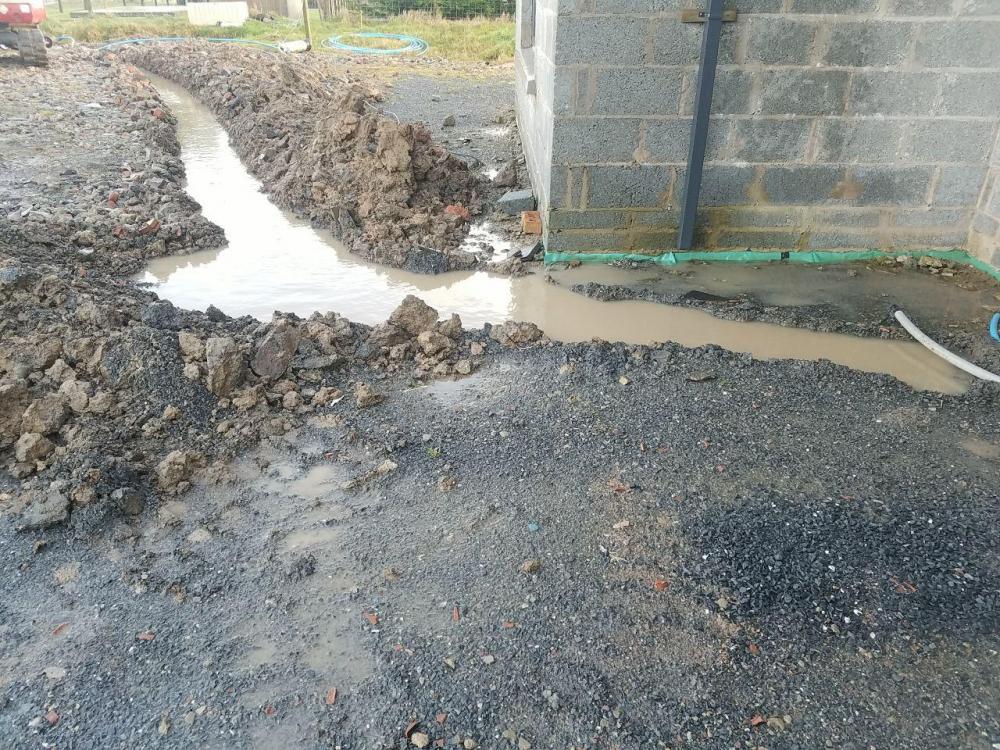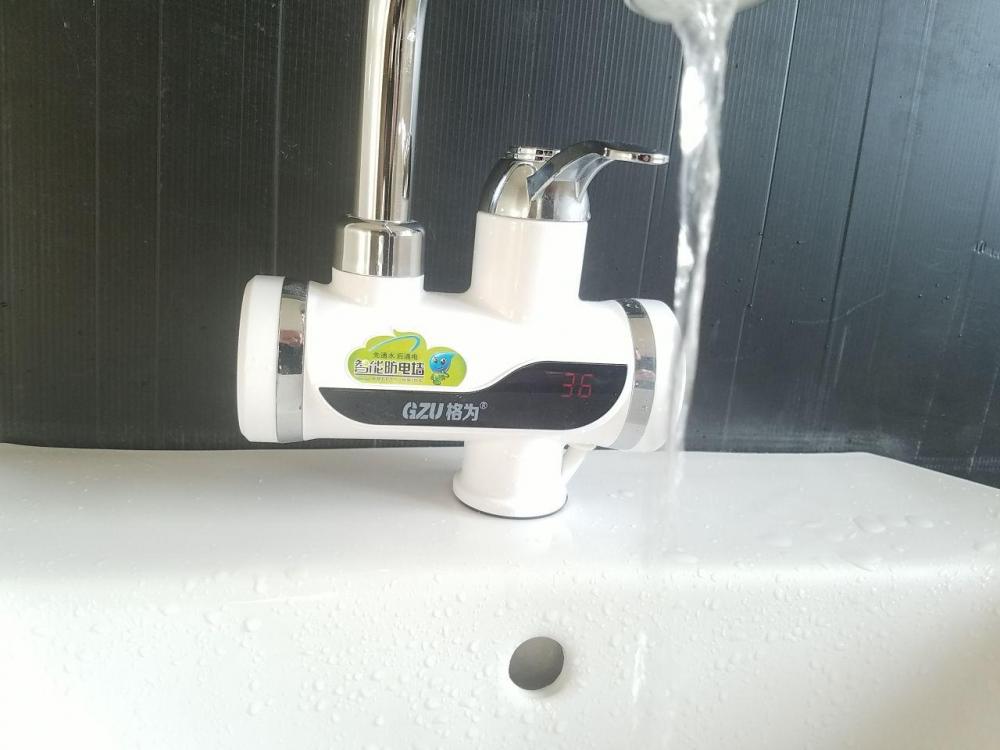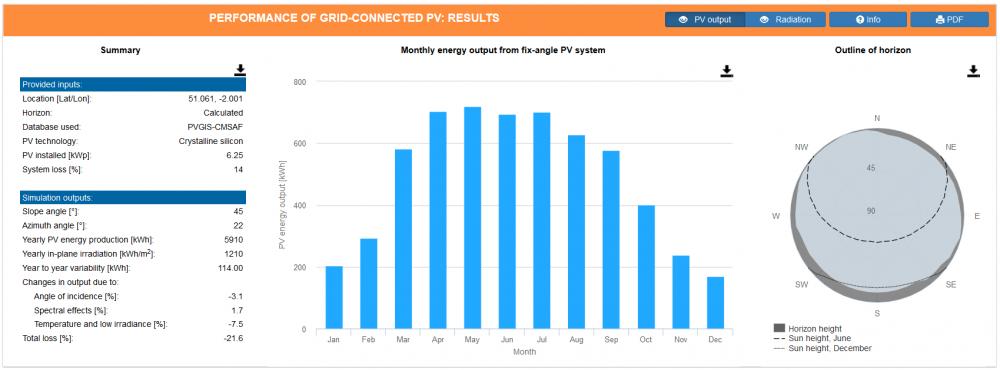Leaderboard
Popular Content
Showing content with the highest reputation on 02/11/20 in all areas
-
I am just fitting my windows and decided I wanted to avoid any window tape as I thought it looked a right pain, on the advice from NORSKEN windows I have used a system made by TREMCO ILLBRUCK it is a two part process first you use there airtight foam FM330 if I remember correctly, you let this dry and trim it back flush, you then use an air sealing paste that comes in a tube, you squirt this all over the foam just like silicon. However the clever bit is it has a very low viscosity so you get a 20mm wide paint brush and pull it gently down so it spreads all over the foam, you can get your finger in the corners and smooth it out, you can brush it all around the brackets making a complete seal. I am very very very impressed with the product and the reduced cost compared with tape. I am generally a hard arsed very hard to please bloke, but i am seriously impressed with this stuff. I think i have spent £220 on sealing up all my windows, and they are huge, my average window is 2.6 wide by 1.8 high so a fair distance around them.2 points
-
2 points
-
The Lux Power AC systems look very controllable, and are top of my list at the moment: Lux-Power-Hybrid-Inverter-Datasheet.pdf2 points
-
Hi there, I am currently getting quotes for Timber Frames and have a price from Solo Timber Frame, which is very competitive. Has anyone any experience of using them? Thanks1 point
-
Since the last entry we have completed the upstairs. This area consists of two bedrooms and an open plan play area landing. Carpets were fitted after the Christmas break. Lights, switches, sockets and fire alarms have now been installed. My wife is working her way through the rooms downstairs. Painting, caulking and tidy up plastering work. We are really happy with how this is coming together. The temporary supply electrics have now been taken away and we are now wired up to our consumer unit. It’s great to be able to use lighting and sockets throughout the house. The bathroom, en-suite and utility have been ordered today so hopefully I will have some progress here in a month or so. Feels very close to being finished or being able to move in!1 point
-
I was also a bit apprehensive about the building warrant side of things. The actual regulations you have to follow for design and layout are easily available (https://www.gov.scot/publications/building-standards-technical-handbook-2019-domestic/) and you can spend many a happy hour poring over these to ensure that your design will comply. Even though I didn't have to adhere to these, I followed them anyway as I saw no downside to doing so, and it took away the guesswork for whether a space would work or not. You probably won't get very many actual inspections. Building control don't have that many people on the ground, and if you don't make them suspicious then they'll just want to know when you've reached certain stages. Other people who have done a conventional build will be able to advise you on this. The most daunting part, to me, was the need to provide structural drawings and calculations. I drew all my own plans for PP purposes, and did all my detailed design work using Sketchup (free 3D software, not really an engineering/CAD tool but excellent for visualising a project). My pencil drawings were fine for the planners, but building control would have wanted more detail. If you are buying a prefab kit, or have a main contractor, then they will almost certainly provide the building warrant drawings for you as part of the package. And if not, there are professionals (architects, engineers, etc) who can do it for a relatively small sum. Certainly their fees will be far less than the amount you save if you do a conventional build with a VAT reclaim. As you've said elsewhere you may want to make this your primary residence at some point. I would suggest you consider a conventional build route with a VAT reclaim, and don't mention anything about renting it out at any point. You will save 20% on your build costs, be eligible for a normal mortgage, and the finished market value will be solid.1 point
-
More progress today, more milestones. Paul was down bright and early (freezing!) and by the time I called down for the morning update he'd cut a fine-looking trench out the front to let the front downspouts and future ACO run straight out to the open field drain. ...which dealt nicely with the weekend's problem. The trench dug for the mains water drained into it. We then brought the water into the house, dropping from the long 32mm down the lane to a 25mm at a toby, so we've local isolation. Sent me up the lane to turn off, and them promptly made the joint live before I had a chance to even get the screwdriver out of the car. Phone line is in alongside it. For completeness, here's the rear and right rainwater drainage, with a rare sight on Sandy, in the trench, trying not to lose her wellies to the clay. All the foul works sit on top of this pretty much so we'll need a few loads of rubble now to build levels up past them. No piccies of the foul yet, must do that for my records. And the final result? Loo flushes, and Chinesium hot-water tap works. Bought on a whim but it's actually a pretty smart item. I stripped and checked it for all the usual Chinese failings. Metal clad element, earth wire connected to it, overtemp and underpressure control. Super. Just need to pull the SWA out to the treatment plant and get it commissioned now.1 point
-
As a camper personally I think you would be going the wrong way with Glamping. It's an impulse even may be a fad. Far bigger market in a decent no frills camping and hookup site with clean showers, wifi and eco friendly. I'm no expert but I've seen plenty of unused pods and Gypsy type setups go empty on my travels. Do plenty of research.1 point
-
That's a nice chunk of land. I would think carefully and come up with a site plan. Design it with the end in mind, think carefully about the long term vision of the site. Which area lends it self well to glamping and which area you could have maybe 3 larger log cabins on. Prove it works with the glamping site and invest in the log cabins once you know it will work. It's also a pretty good approach to get planning in a staged way and prove to the council it will be a benefit to tourism etc. Exactly break the mould and make it unique. The key is differentiation in the market, the more quirky the better sometimes. You can do research very easily on Air BnB and other site to check occupancy levels and typical rates.1 point
-
I know it’s been here since pre-2004 but that’s all I know. General consensus from those I’ve spoken to is that it’s textured paint and not artex.1 point
-
Changing resin on these is pretty fiddly due to the small ports. They use a packed bed and it is blown in at the factory so you’ll never put back in as much as comes out. Being a packed bed though makes it more easy to identify resin degradation. If the resin has become damaged by chlorine from mains water it tends to break down and expand. Once you’ve got the resin wet and flushed, turn off the water supply again and using the method Jeremy noted to manually regenerate you can relieve the water pressure inside. Then just remove the filling ports and if resin starts rising upwards out of the hole then it’s had it. If it stays at the lower edge you’re good to go. I’m on a job this week adding 325 litres to each of 9 2500litre softener vessels which were under filled when built and we are literally just pouring bags of Purolite straight into the 6” wide necks from above whilst standing above on a scaffold.1 point
-
Yes, a DP disconnects both L and N. The advantage of this, for an all RCBO board, is that it is safer, as it provides protection if there is an E - N fault. A split board with two DP RCDs and MCBs for each circuit (which is the minimum required by the regs) provides DP earth fault protection for all circuits, but does mean that any such fault takes out half the circuits in the house. An all SP RCBO board is OK, and means that an earth fault only takes out the affected circuit, but it doesn't necessarily provide protection against all faults; an E - N fault might not be be reliably detected. An all RCBO board, with DP RCBOs, provides protection against pretty much any fault condition, and also means that only the faulty circuit will trip, leaving all the others working.1 point
-
most of us when younger would walk along a ridge or across unbraced joists and not think anything of it, however, as you get older and wiser you realise how much it would hurt if you fall and become a little more circumspect.1 point
-
I was thinking more along the lines of not being able to reclaim it. I just got in on my own reclaim with 1 month to spare before the end of the 3 year limit that applies to England.1 point
-
I don't think there is anything specifically in legislation about floor construction, it's just that the building must be capable of being moved in no more than two sections. You could split the building in two along the long axis, halving the joist spans, but each section has to be self supporting, which will complicate the roof structure a lot. @iSelfBuild knows more about this than I do- I was fortunate to not face too many questions during my build. As far as I am aware, the definition of a 'caravan' for the purposes of building regs exemption are simply that it must be movable in no more than two sections, and the completed building should be no more than 6x18m (Scottish rules- England allows slightly larger). Internal ceiling height maximum 3.048m. It doesn't need to be on wheels, and there doesn't actually need to be physical space to get a crane or other machinery in to do the lifting. The portability is innate to the building, and not dependent on its surroundings. As I've said before, I do think that the benefits of going down the portable building route are sometimes overstated. It worked for me because I couldn't do a VAT reclaim, didn't need to get a mortgage, and was doing all the design and build work myself. Of course if you're doing it because you want to cut down on thermal performance, fire safety, disabled access, and save a bit of time and money not having to do the building warrant and inspections, then go ahead. But most of those regs are there for a good reason, and you'll end up with an unmortgagable property and no VAT reclaim.1 point
-
Same as me but every year I tell Plusnet that I will leave and they bring down the price to a sensible level. Currenty 18 month fixed price @ £25 for Fibre 40mbps, free evening and weekend calls. This year I also managed to get the router updated. You need to tell them the deal you will move to if they do nothing, I usually quote TalkTalk and when they say you know how bad they are I just reply, well I had them for 5 years before and they were fine so give me a decent deal. Go get them Jeremy!1 point
-
Would a DIN rail time switch like this be appropriate to make that neat?1 point
-
Fairly sure it's not that simple, either. I have used my modem and login credentials to connect to PlusNet from another PlusNet subscriber's premises on the same exchange. On the other hand, when I tried to connect to Andrews & Arnold from the previous tenant in this house's left over broadband connection (long story) it didn't work. It wasn't A&A that rejected the connection; one of their engineers was watching their systems as I tried to connect as they were curious if it'd work, too, and they didn't see anything.1 point
-
Ah a 3 phase board. Not so convenient. You would be looking at something like this, https://www.ebay.co.uk/itm/CONTACTOR-63-AMP-2-POLE-AC-12kW-NORMALLY-OPEN-HEATING-LIGHTING-DIN-RAIL-MOUNT/174122632964?epid=6007308395&hash=item288a848704:g:dYcAAOSwBY5d8RnJ It might be possible to put that inside the CU, but not in place of a pair of mcb's as you can often do with a single phase board. It all depends how much room there is inside and how much depth. Alternatively the contactor could be mounted above or alongside the CU in it's own enclosure. Use a normal single channel central heating programmer to set the on / off times. the output of the timer feeds the coil of the contactor. P.S. Have you really got two washing machines and 2 tumble dryers?1 point
-
And the notion that you have to pay more for them NOT to carry out a machining operation and fit some parts to a window.1 point
-
Small update: Last night I managed to retrofit an ESP-01 into a ZyAura ZGm053U sensor, and that's been running overnight. The initial numbers show it is pleasingly close to the MH-Z19B, which is good as if they were wildly out I'd really be needing to buy that third CO2 meter from @Jeremy Harris to cast the deciding vote between them! I t definitely helps that after a week (and 2 calibration cycles) the MH-Z19 has settled down to far more convincing readings. Not just in terms of zero offset, but the max readings are generally half what they were (1000-1500 overnight, rather than 3000+) Interestingly it does confirm what I already know - that it's actually the Temperature reading that's much further out of whack with the MH-Z19 -- consistently over-reading by 5°C. (The MH-Z19 is only reporting to 0 decimal places anyway, so not a very useful or pleasing graph at the best of times) (aside: at 6.30am I got up and rode the stationary trainer bike in the room next door -- you can actually make out a dip and then peak of CO2 from that excursion on both sensors.) The hack to get an ESP-01 into the ZyAura is a work of art in its own right; I'll post a photo and details when I've tidied it up a bit. Also, I'm finding ESPHome a continuing delight to tinker with like this.1 point
-
I've bought some of these to try: https://www.electricalcomponentsdirect.co.uk/acatalog/Compact_Mini_RCBO_Circuit_Breakers.html First impressions are that they are extremely similar to the SBS ones and seem to be well made. Reasonably good value for DP compact RCBOs. I believe that ECD may do a metal board populated with these for a reasonable price.1 point
-
FWIW, here is my little survey of grid-tied storage and what I went with, also not for saving money, and also not able to keep us up if the grid goes down. (The grid has only been down for 2x30m in ~15Y here!): http://www.earth.org.uk/electricity-storage-whole-household-2018.html http://www.earth.org.uk/Enphase-AC-Battery-REVIEW.html Rgds Damon1 point
-
I can only comment on my experience so far. I met / discussed with about 4-5 different architects to get a good picture of what people were like and how well they matched with us. Some were so far up their own backside and couldn't possibly fathom a fixed fee basis and others were fantastic but a bit out of our budget. I was only interested in a fixed fee basis. We ended up with the second architect we talked with - actually he is an Architectural designer if you want to use the proper term as that is his qualification. We chose him because he had very good experience of modern building methods (SIPS / timer frame, which we are keen on), he was very easy to get on with, and his business ethos (or size) matched our needs. E.g He does good design but based on a pragmatic approach to building, in other words he seemed to design houses that were in our ballpark of value and similar budgets . I had talked to architects who had more flair and excellent design skills, but what scared me was they didn't seem to have a handle on modern methods, they thought stick building was best and using a main contractor was what people done, or they were designing £1.5m fully glazed passivhauses hence we would be the low end of their clientele and imo woudl have ended up not getting the attention i wanted. A further point being he matched our budget, he was 60% of what the others cost and I found that value for money and didn't grudge it. Now currently we are at this same stage as you. I presented him with my design brief, which was a 10-15 page document covering the site, sun azimuth, location plans (he already visited site before quoting me) 4-off A3 sheets of house designs and pictures we liked. Then he went on his way and produced a design for discussion. He took all that we asked for and designed a house to suit and positioned it in a good spot (albeit slightly off where I wanted it) but this is a big plot...4 acres hence moving 15m back is no issue. He fitted most of the rooms in and got a good flow and made the most of the sun position and our views. The only thing being is that it was 260m^2 when I had asked for 200m^2 ..but he highlighted that and this was the next stage for us to start to compromise and adjust. Despite the above, we felt this first revision didn't meet our expectations perfectly (my wife was actually upset at first, but she wasn't even sure why) we couldn't tell why as it met the design brief but we weren't getting the 'feels'.This initial design made me question if I had chosen the right person, as I think we were expecting perfect out the box (even though I know that's not the case as I am an engineer myself) So we have been messing with this design as we were unsure about some stuff and have since gotten another 3 variations and also a completely different layout....based on a layout which we sent him (which actually we don't like on paper ?). In fact this most recent design that we thought would be great has made us realise just how good the architects first design was and how well it worked! (If you look at my threads you'll see my open plan conundrum post). On Friday he came for a 1 hour meeting to our house which was an 8 hour round trip for him (this is the 3rd time I've met him and second for my wife. Albeit the first formal design review if you like), we went through the designs what we love and hate and it was a very easy conversation and he is now away to work up another few plans and we are really confident that he has listened but will also steer us in the right direction. As another note, I haven't received any invoice, as its not due until we finish this stage, but I have queried if he wanted some payment but he said it was fine and no rush (we have agree the fee basis though). I'm only mid way through this stage and I will have had 5-6 designs by mid week here and they have had elevations and full floor plans with sizes etc in there. Seems like a bit of a long post but in summary what I am trying to convey is that during the initial stages it is an iterative process and you may possibly feel unsettled and disappointed. However it is the job of your architect to listen first of all and try and focus on your design brief and deliver that if it is achievable, from there they can then develop the design with you and get it where you want it to be. In my opinion - he hasn't listened first of all and is now pushing to finalise quickly in order to get paid. Also if they are following RIAS guidelines or similar they should complete the stage as above and then invoice you, not mid way. I would read the contract and refer to that if you have signed one. As you will already feel in your gut, if something ain't right, it just ain't right. If you are not happy challenage it and stand your ground, ultimately feel free to walk away and get someone else.1 point
-
What you need is a normal timer switching a contactor. Is there any spare space in the consumer unit that feeds the charger? Picture?1 point
-
The only reason I emphasised exchange rates was because we purchased our house from Ireland, and it was shipped from there in large prefabricated panels, so having a contract that was firm and priced in pounds, rather than Euros was reassuring. A fair few people here buy fairly expensive stuff from Europe, too. We bought our MVHR from Denmark, and it seems as if the UK installers for this make also buy units in from Denmark to order, so there may be an exchange rate risk there.1 point
-
The good news is that the unit is one of the newer ones, with the redesigned fill valve. The original fill valve fitted to the earlier models looks quite different. The resin is probably fine, it's pretty robust and will tolerate a fair bit of abuse. About the only thing that will kill it is if someone has decided to flush something nasty through it, like neat bleach.1 point
-
This is the assessment that needs to be done for permitted development https://mcscertified.com/wp-content/uploads/2019/07/MCS-020.pdf1 point
-
You need structural calculations proving it can be lifted by a ”MIStructE” or “FIStructE" engineer and also a comprehensive method statement demonstrating how it complies and meets the caravan act and this should be accepted by the local planning and building control to prevent future complications. I think I cover the prices in my thread I linked, it's not a low cost option as it is 200mm round log and designed as a show home so has solid oak kitchen etc. The one you linked to is a very thin wall construction, it could be made to comply with EN 1647 - 5% VAT rated, seasonal use.1 point
-
There is a lot about different methods on this thread: Depending on the roof .. material, amount of moss and height ... I have in the past used a 3 stage extending-broom, a window cleaning pole with brush, or copper sulphate solution using a £1 kiddy super soaker from the pound shop. The super soaker can reach about 6m up ... surprising. if I get one for clean water I can harass cats throughout the garden from the doorstep. I did half my roof with copper sulphate last summer, but cannot judge the impact over time until the snow clears. If you are looking at solar panels, then I would say take a serious look at replacing that section of the roof as once they are on you will not want to touch it for 25 years. Look at an in roof system. Personally. I pay people to do roofs .. I go as far as cleaning gutters. Ferdinand1 point
-
It's worth pricing up the parts on the wundatrade website yourself if you are confident1 point
-
The fill valve is the pipe thing mounted on the side, between the two tanks. It's a type of float valve, that sets the level of brine in the outer tank. If the resin needs changing then it's not that difficult to do, it's just a bit fiddly. There are resin fill ports on the tanks, at the top. Hardest bit may be flushing the old resin out of each tank. The challenging bit is if the water meter develops problems, or the O seals on the valves it controls need replacing, as it's a night mare to reassemble. When you connect the thing up, with salt in, do two manual regenerations once the salt has had time to form brine in the tank. To do a manual regen, fit a screwdriver in the white slot on the top of the water meter, push down against a spring and rotate the white bit clockwise through 360 degrees, until it pops back up. You will hear it start to regen one of the tanks, a process that takes ten minutes or so to complete. Once it has finished regenerating one tank, repeat this process to regen the other tank. The need to do this is largely because you don't know the state the unit is in, and this ensures that both tanks are fully regenerated at the start. The unit is then set up and ready to go.1 point
-
A project for @Onoff A repurposed flat screen tv or monitor and a recording of what you want. you could even make it more realistic with clouds floating by. Or just a video camera on the roof looking at the sky.1 point
-
Don't worry about the high loads and duty electrician thing. That questionnaire looks like it will cover anything from a house to a factory. Just tell them about the 24kW boiler and how it operates e.g on a timer. The CT thing would be applicable if you had solar PV and a diverter to sent power to an immersion heater (CT = current Transformer that clamps onto one of the meter tails)1 point
-
£2000 from wunda, supply only, pipes manifold, room stats and all the other bits and bobs. 180m floor area.1 point
-
1 point
-
I've been reading (or trying to) the caravan acts for a couple of days[1]; this webpage sums up the definition of a caravan as well as anything I've read, with a look at case law, as well: http://selfbuildtimberframe.com/news-the-legal-definition-of-a-caravan-mobile-home-draft-1/ [1] Find them here:- Caravan Sites and Control of Development Act 1960: https://www.legislation.gov.uk/ukpga/Eliz2/8-9/62 Caravan Sites Act 1968: https://www.legislation.gov.uk/ukpga/1968/521 point
-
I went ahead and purchased the unit for about £40 iirc. Approached a local softener company who had two older units that were in the skip so kindly gave me the riser pipes from both of them. Easy to replace, but not actually plumbed the unit in to test. I may still have to do that also....if Jeremy is referring to the same part that I have changed. Bought some salt last week so will just place that in the unit, get it to regenerate and then see whether the unit provides softer water!1 point
-
I would dispute that --they seem to go out of the way to put up objections to one off sites telling us what our house should look like -- and fall over backwards for big builders who cut corners at every chance1 point
-
Feel free to drop me a message to set up a phone call. Happy to answer your questions, the cabin you have linked to does not comply with the caravan act. The vast majority that market their cabins as 'caravans' are none compliant and if investigated would get enforcement notices to remove off site. I have designed my cabin fully compliant with the caravan act, we have 2 identical cabins being installed this Summer and 6 further projects booked in for 2021 so far. Bit of background on my experience here:1 point
-
When you look at tge manufacturer info it will sometime specify a 150mm bearing on the larger lintels. You can't go under 100mm bearing, so for your 1248 window you would order a 1500mm lintel1 point
-
Make sure you are talking about opening sizes and not window sizes, as allowing for fitting will leave your lintels without enough bearing.1 point
-
It's been a while since I last updated this, but we're slowly making progress. Since the completion of the roofing in November, we've mostly been cladding, the joiners fitted the doors and windows, we boarded the inside and last week the cellulose got blown in. It's reassuring how well the house retains the heat from a small portable heater, unlike anywhere else I've ever lived! Bit of a delay in the cladding due to me underestimating both how much we needed and also how much we discarded (too much sap). Weather's made things a bit slower at times as well. Photos below. Cladding in progress (don't look too closely). The ends have all been trimmed and bevelled now but this is the only photo I have. The snow arrives, makes for cold hands when they're above your head hammering all the time. Boarding the first floor with OSB The insulation arrives. And disappears into the walls within a day.. Next up, try and sort the foul drainage as it's been a bit neglected, MVHR first fix and then ready for electrical and plumbing first fix.1 point
-
if you talk to your insurer carefully, they may let you use your own contractor and pay against receipts. I do that sometimes. Bit more organising, but it gives you control .. and you could get your roofer to split the invoice into insurer work and your work. You would probably need an assessment from the insurer’s assessor or your own first. I have a couple of retired architects I have known for decades who can do these at the drop of a hat. If you want to use your own assessor and get it done quickly, you can see if they are going to make you wait, or simply declare that water was coming in so it had to be done pdq. Perhaps your assessor will tell you that the insurer stands to waste hundreds on the cost of hiring dehumidifiers if you don’t get it done. Sometimes there is a lot to be said for having your own report first as a matter of .. er .. insurance. Probably only worth it for substantial claims of several thousand or more, though your scaffolding will add up if it is across much of the length of your house. Ferdinand1 point
-
I've been following the Octopus variable rates, Go tariff, etc for a while, but can't get the sums to add up for our pattern of use. I also suspect that these tariffs are very much an inducement to get more people to have "smart" meters, so that tariffs can be made more complex, and harder to compare in terms of value for money. One problem is that we need most of the 7 hours E7 off peak period in order to charge up the floor slab, and this isn't something that can be speeded up by just increasing the power input, as doing that increases the flow temperature, which then tends to cause a temperature overshoot. Battery storage helps a tiny bit, but not as much as might be thought at first, as the cost of re-using the stored cheap rate electricity is about 1.2 times the unit cost, because of round-trip losses. That makes the 8.148p/kWh E7 off-peak rate really 9.78p/kWh for us. The Go tariff is marginally better, but again the 4 hour time slot is tight, allowing for the slow down in charge rate of batteries during the balancing phase (a 10 kWh battery storage system may only charge at a mean rate of around 2 to 2.5 kW in practice) and allowing for the 30 min period of uncertainty in timing at either end of the 4 hour period (makes the 4 hour slot effectively around 3 hours, until such time as some means of accurately syncing meter 30 minute tariff rate change periods with loads is implemented).1 point
-
Welcome. There's a pretty useful website that allows you to put in your location, the orientation of the panels and the number of panels and will give you the estimated generation over the course of a year, month by month, PVGIS: https://re.jrc.ec.europa.eu/pvg_tools/en/tools.html For example, this is the estimate it provides for our PV installation, which is pretty close to what we actually get in practice (we tend to get a few percent more than PVGIS indicates, our average is very close to 6,000 kWh/year over the last five years):1 point
-
You will find all the landfill taxes have put prices up the only way to do it cheaper is to separate it well 1 small skip for bricks, rubble £175 ish large bulk skip for lightweight stuff, plastic,wood insulation £250 ish get a metal drum and burn all the timber off cuts, make it look like your using it to warm your hands, keep it very small and you won’t get complaints. I opened an an account with a skip co and save about £25 per skip but it’s still a fortune1 point
-
0 points
-
0 points
This leaderboard is set to London/GMT+01:00










.thumb.jpg.bac90f3bbf6868cf2118d010d936c99d.jpg)








